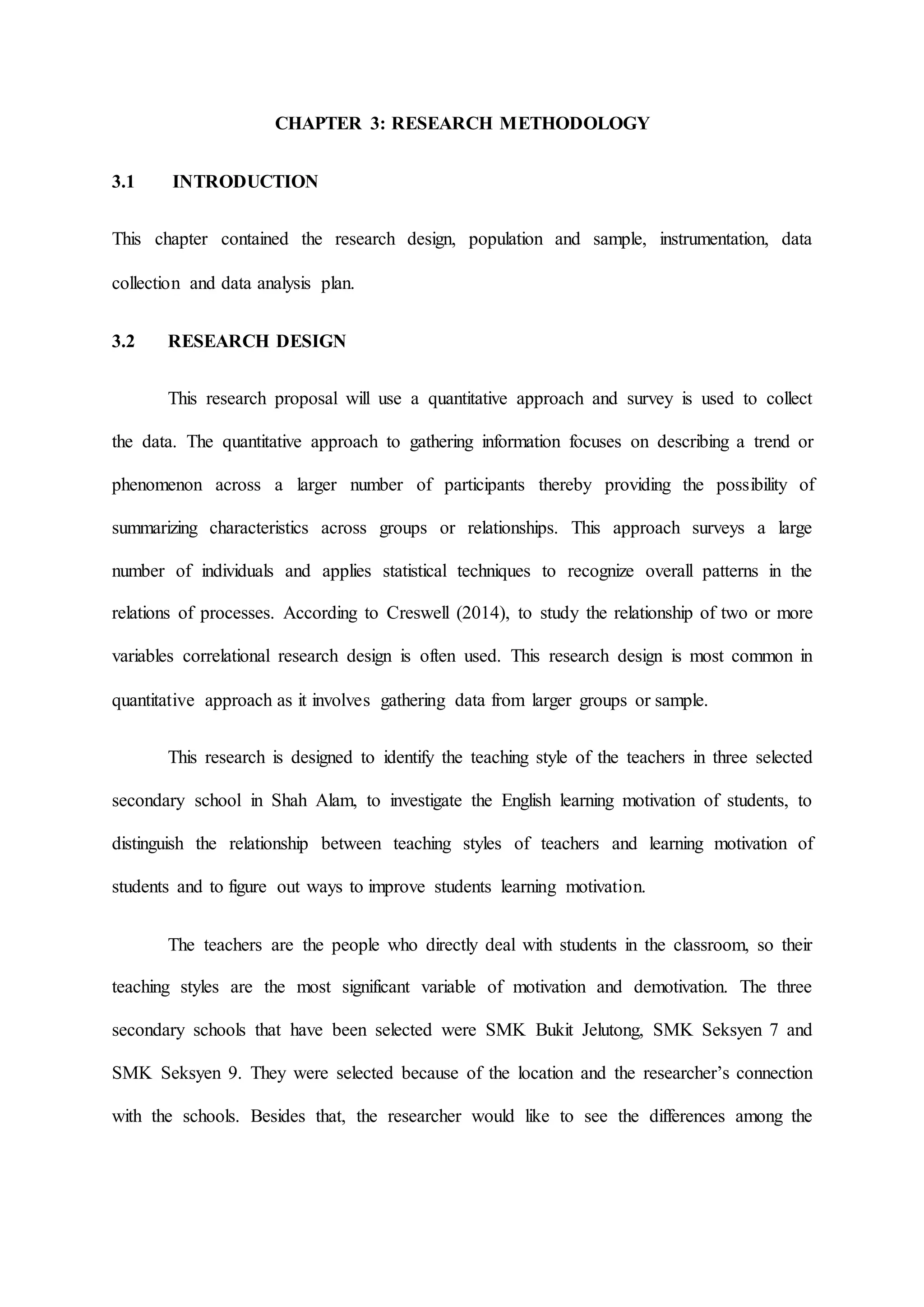This chapter outlines the research methodology used in the study. A quantitative survey approach using questionnaires was used to collect data from 40 English teachers and 135 secondary school students in 3 schools in Petaling district, Malaysia. The questionnaires included sections on demographics, the English Learning Motivation Questionnaire (ELMQ) to measure students' motivation, the Teaching Styles Survey (TSS) to identify teachers' teaching styles, and open-ended questions. Data was analyzed using SPSS to identify patterns in teaching styles and their relationship to motivation. The study aims to identify teaching styles, recognize motivation levels, investigate the relationship between styles and motivation, and identify ways to improve motivation.








